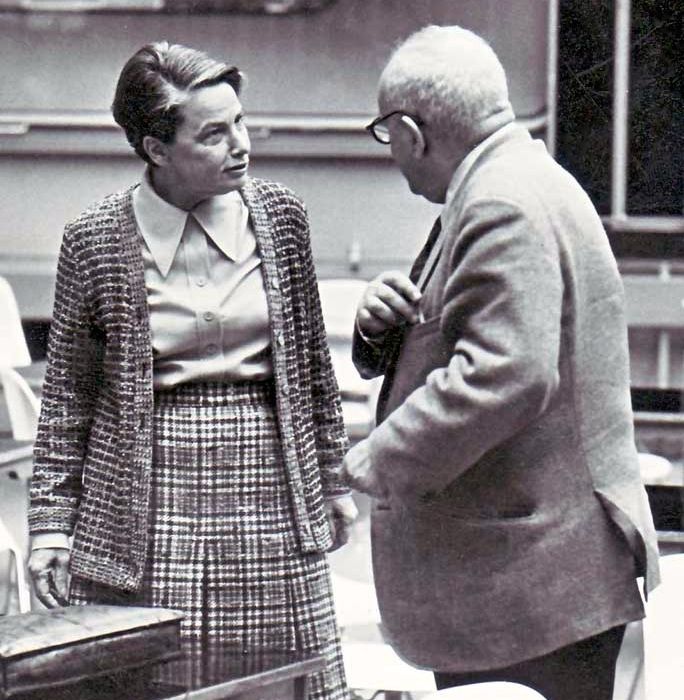For our second Each One Teach One presentations we focused on different terms and concepts relating to media and speech. I was intrigued by several of them, but for this post, I will focus on my classmate David Pergamo’s presentation on the Spiral of Silence.
What is the Spiral of Silence?
The Spiral of Silence is a communication theory formed by a German professor and researcher named Elisabeth Noelle-Neumann in the late 20th century. The Spiral of Silence explains why and how public opinion grows. Em Griffen defines the term as “the increasing pressure people feel to conceal their views when they think they are in the minority.” The famous philosopher John Locke influenced Noelle-Neumann’s thinking. Locke defined three different types of laws (divine, civil, and opinion) and he argued that people only ever truly follow the law of opinion.
 |
| Noelle-Nuemann talking with sociologist Paul F. Lazarsfeld |
Public Opinion
Noelle-Neumann defines public opinion as “attitudes one can express without running the danger of isolating oneself,” but I believe one could also think about it as the majority’s opinion. Through Noelle-Naumann’s studies, she discovered that people generally know which way public opinion is swaying and they can often predict future trends. Noelle-Neumann named this size sense the quasi-statistical organ, and it is what people use when they are trying to gauge whether or not to speak about certain topics with certain people.
An Example
So what does the Spiral of Silence look like? For example, imagine there is a group of friends discussing the latest policy of immigration. Let’s say that the majority of the group is in favor of opening a country’s borders to more immigrants every year, and the minority feels that the limitation on immigration should remain the same. Let’s also assume that no one is aware completely of where the public opinion lies within the group.
Af first, Friend 1, someone with the minority view, may be willing to speak up and discuss their views with the group because they feel comfortable around them and/or think they will have similar views as their own. If Friend 1 starts to talk and Friends 2, 3, and 4 all furrow their brows and frown, then they are exerting “isolation pressure” onto Friend 1 whose views don’t align with theirs. Friend 1 then becomes very aware of the fact that they hold the minority view, and they start to enter the downward spiral. Let’s say there’s a fifth friend who wasn’t present during the initial exchange. If they enter the conversation and ask what was everyone talking about, Friend 1 is now way less likely to chime in and engage with the topic because they fear being rejected entirely by the group.
 |
| How someone may feel after experiencing isolation pressure |
Now imagine this situation with mass media in the mix. If Friend 1 saw several news articles holding the majority opinion and none holding their own, then they probably wouldn’t have spoken at all. Mass media and other social trends, such as cancel culture, are major contributors to the Spiral of Silence and how many people fall down it.
Final Thoughts
Anyone can fall into the Spiral of Silence; I’ve experienced it myself several, perhaps too many, times. It is something that is hard to fight against, yet it is important that we do resist the societal and peer pressures exerted on us by mass/social media and those around us. Just because you’re in a minority group doesn’t mean that you’re alone. In his blog, David points out how important this is, and I agree wholeheartedly when he says, “Everybody’s voices should always be heard.”





No comments:
Post a Comment